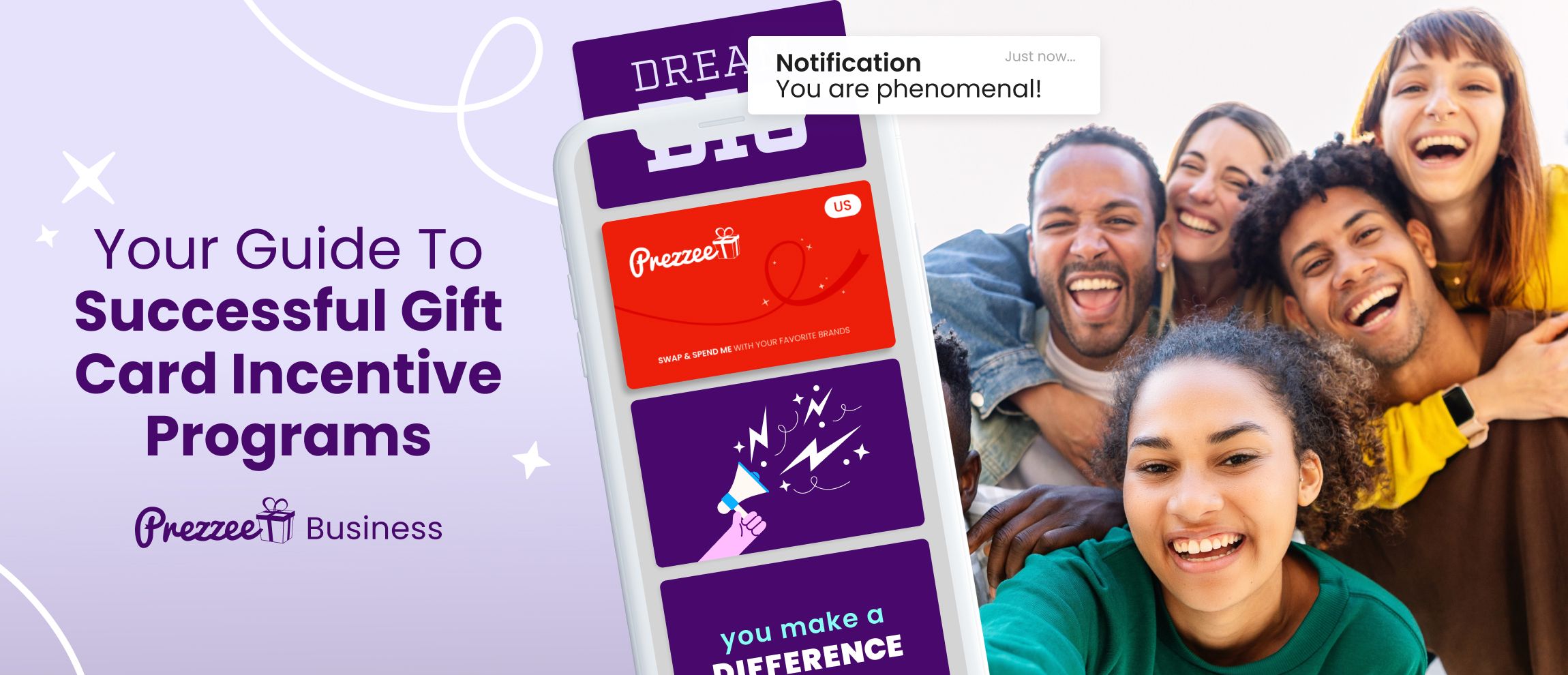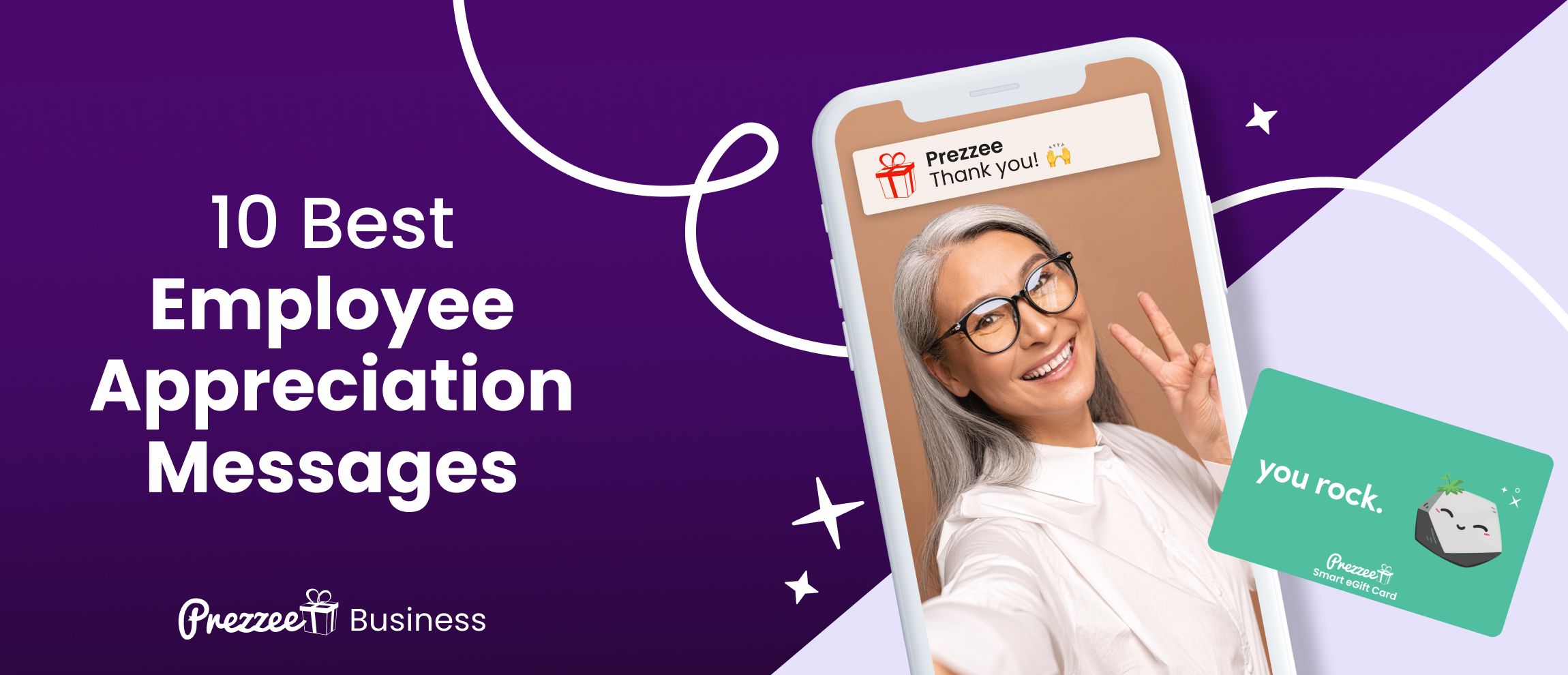Your Guide To Successful Gift Card Incentive Programs



Your Guide To Successful Gift Card Incentive Programs
Incentive programs have existed since — well — humans have. However, it wasn’t until after American behavior psychologist Burrhus Frederic Skinner coined the term with his incentive theories in the 1940s that our basic human instincts were tapped as a sales strategy.
Skinner’s Incentive Theory of Motivation is now vastly applied to various industries, especially business management and sales.
But what exactly are sales incentives? Simply put, a sales incentive program is implemented to motivate employees to reach personal and company goals. Usually, rewards serve as motivation, pushing employees toward success.
The Incentive Research Foundation studied 300 top-performing companies (with $100 million or more in revenue and 90% customer retention) to learn what made them successful.
One factor this elite pool of organizations almost all had in common? 70% leaned into goal-based incentive programs as a motivational tool to keep employees engaged.
The beauty of setting goals for employees instead of a non-personalized, blanketed quota is that different salespeople are motivated by other metrics.
A top performer may need to have the opportunity to chase the next level to stay engaged continuously. In contrast, average performers may need to keep their focus on just one target to avoid becoming discouraged.
However you decide to structure the qualifications for success, you should tailor the reward to your team’s performance styles.
The Case for Non-Cash Rewards
REPLACE WITH IMAGE
The Incentive Research Foundation also found top performers are 35% more likely to find non-cash rewards highly effective in boosting employee performance.
Furthermore, 93% were firm supporters of implementing non-cash rewards as a competitive strategy for their company.
It’s essential to consider the philosophies of successful companies to emulate the same outcome for your company. Let’s look at how to establish a non-cash reward incentive sales program.
What Are Non-Cash Rewards?
Non-cash rewards or anything awarded not linked to a direct cash exchange, such as bonuses or profit sharing, have been shown to spark a different kind of inspiration in employees.
There’s a certain appeal to obtaining something money can’t buy, which helps to drive sales. Even better, non-cash rewards come at a lesser expense to your company.
Examples of non-cash rewards include:
- Extra vacation/paid time off days (PTO)
- eGift cards
- Flexible work arrangements (working from home privileges)
- Career and personal development opportunities
- Employee recognition
- Awards (trophies, plaques, employee of the month programs)
Although all options are beneficial, let’s focus on the most simple yet highly effective option: digital gift cards. Keep reading to learn how to properly leverage your rewards to get the most out of your incentive program.
The Business Beauty of Gift Cards
REPLACE WITH IMAGE
The general popularity of gift cards is due to their ability to combine the efficiency of the digital world with their flexible nature, like cash. However, their appeal as a business tool goes even beyond that.
As you know, time is money, and there’s no room for anything less than a streamlined process.
A 2018 Cornell University study found that when managers rewarded their teams immediately after a positive action, employees were likely to stay motivated to complete tasks.
To foster time savings and simplicity to achieve that same motivation of your salesforce, consider the following benefits of using eGift cards as incentives:
Accessibility
While gift cards are accessible by design in the first place, digital gift cards supercharge the ease of use. Employees can access Prezzee 24/7 to redeem their eGift card reward.
Immediate or Scheduled Delivery
Rewarding your employee as soon as they reach their goal is imperative to drive the link between stellar effort and reward. Traveling to the supermarket, finding the gift card section, choosing the right one, standing in line, and then finally chasing your employee down is a massive time suck. Don’t skip a beat with the ability to send eGift cards via SMS or email.
Immediate and scheduled delivery both have specific purposes. Immediate delivery is ideal when you want the eGift card to function as a reward. Whether that be for winning a workplace trivia contest or having the highest sales number in the office, rewards work better when handed out immediately.
Scheduled deliveries still work within the context of motivating employees but really shine when used to arrive on meaningful dates. Schedule an eGift card to be sent for employee birthdays, work anniversaries, onboarding events, and more.
Fewer Approvals Required
Save time (and yourself a headache) by keeping it simple. There’s no need to tap your human resources and other departments to get potentially tricky initiatives approved, such as extra paid time off days and granting the ability to work from home.
Flexibility
Employees can spend cards, however — and whenever — they want. Is their relaxing, unwinding activity enjoying online shopping at 2 am in the bubble bath? No problem. Digital gift cards can make it happen.
Looking at all the excellent eGift Cards offered at Prezzee, two stand out for their incredible flexibility. While you may have a strong knowledge of what makes your employees tick, you might be unsure of what rewards will have the most substantial impact.
For something more personal, you could reward employees with Prezzee’s Smart eGift Card. This eGift Card can translate to any of hundreds and hundreds of brands and retailers featured on Prezzee’s business catalog. Talk about flexibility!
Set Your Program Up for Success: Consult Employees First
You may think you know your employees — but is a weekly one-on-one meeting or occasional office drive-by enough? The Society for Human Resource Management Organizations tells us that 71% of organizations hold annual performance reviews to share feedback and review goals.
The program with this is the word annual. Communication between business leaders and employees should feel more like a back-and-forth tennis match than an anniversary date.
Double down on showing your employees you care about their progress, concerns, goals, and growth opportunities. An excellent way to do this is by involving them in the incentive program creation process from the beginning.
If you have a better idea of what types of methods will motivate them and what mention of rewards might make their ears perk up, you’ll have a better shot at designing the program efficiently the first time.
Thought starters around questions to ask your employees can include:
- What is one goal you’d like to accomplish within the quarter? What about the year?
- What do you see your next position being at this company?
- What areas are you most excited to work on?
- What do you believe are your areas for growth?
- What would you pick and why if you could give yourself the gift of time, resources, or money?
Holding a conversation around these prompts will likely benefit your program. Even better, keeping these valuable insights in mind going forward is likely to work wonders for your leader-to-employee relationship.
Put the Cherry on Top With Prezzee
REPLACE WITH IMAGE
We’ll leave you with one more tip — employees will appreciate being rewarded even more when it’s supplemented with recognition.
Staying with the theme of efficiency, Prezze can help you tackle employee recognition and the awarding of a gift card simultaneously with one simple click when you sign up for free!
We know you want to see your team succeed for your business and themselves, and we’re here to help make that happen — no incentive necessary.
Sources:
Incentive Theory of Motivation | Explorable
Ten Things Top Performing Companies Do Differently | The Incentive Research Foundation
SHRM/Globoforce Using Recognition and Other Workplace Efforts to Engage Employees | SHRM
It’s About Time: Earlier Rewards Increase Intrinsic Motivation | APA PsycNet



